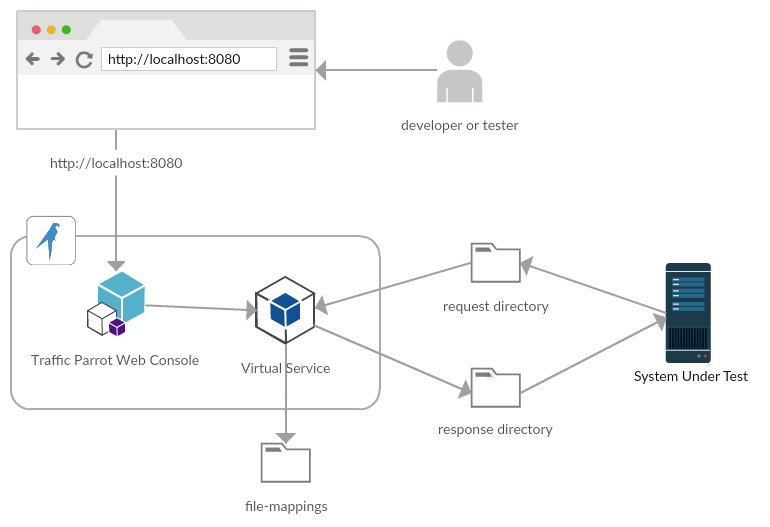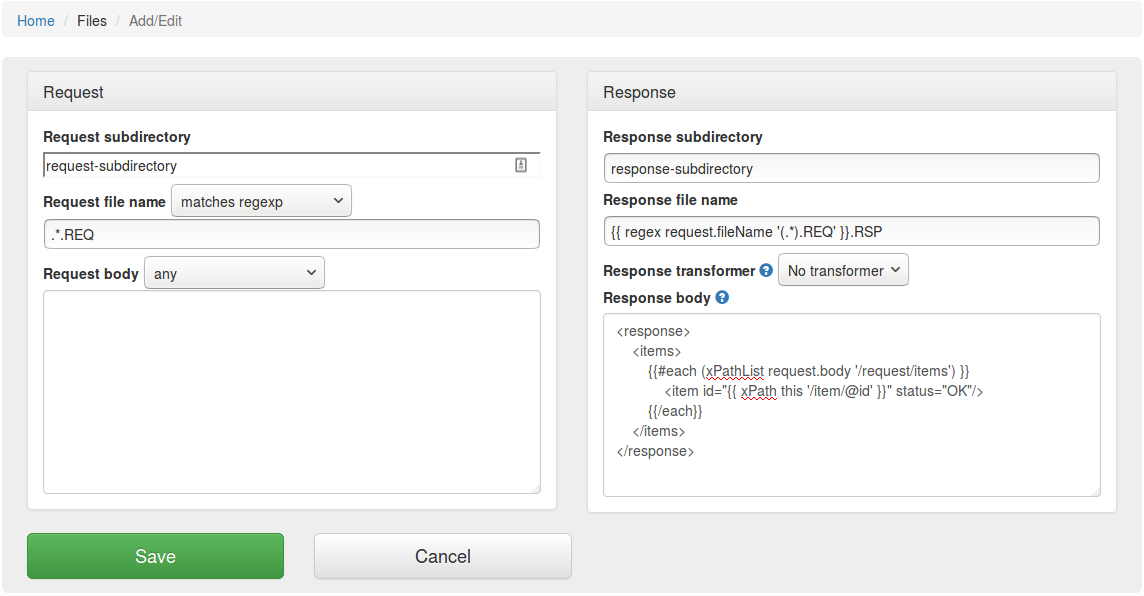Quick start
File virtual service architecture
A tester or developer uses a web browser to access the console. The console manages the virtual service. The system under test (application under test) connects directly to the virtual service on different ports.
Here is an example of how that could look like for a scenario where the virtual service is replaying files.
Add/Edit mappings
Configuration
Define root directories
To record from or replay to file systems you will need to tell Traffic Parrot which root directories to use.
Those root directories are displayed in the dropdown menus on the record and replay panels, for example:

All directories that are configured when e.g. adding a mapping are relative to the selected root directory.
To define a new root directories that will be available in the dropdown in the record and replay panels:- Open root-directories.json file located in the main Traffic Parrot directory, using your favourite text editor
-
Add the new root directories (make sure the id field has a unique value!).
An example content of the file, with 2 root directories defined:
[ { "id": "1", "name": "C Drive", "rootDirectory": "C:\\some\\root\\directory" }, { "id": "2", "name": "Network Drive", "rootDirectory": "\\network\\share" } ] - Note that the \ character must be escaped as \\
- Save the file
- Refresh the page in Traffic Parrot to reload the dropdown list.
In the current Traffic Parrot version you edit root directories directly in the root-directories.json file. In near future you will be able to do it via the Web UI as well.
Change the location of root-directories.json
trafficparrot.virtualservice.rootDirectoriesUrl=classpath:root-directories.jsonto for example
trafficparrot.virtualservice.rootDirectoriesUrl=file:/home/john/git/project/root-directories.jsonThis can be useful if you would like to version control it with your application source code.




 will
allow you to edit an existing mapping.
will
allow you to edit an existing mapping.